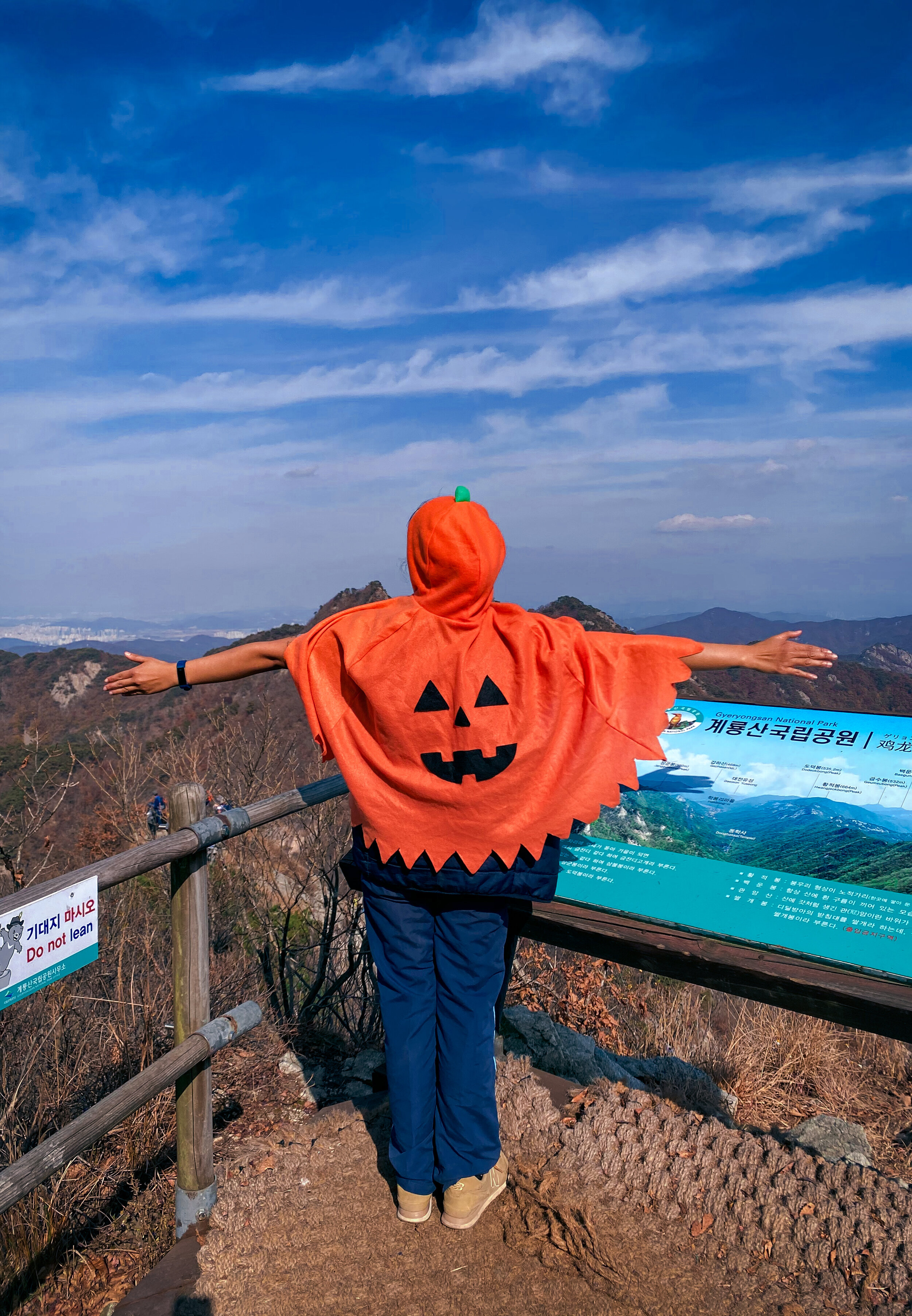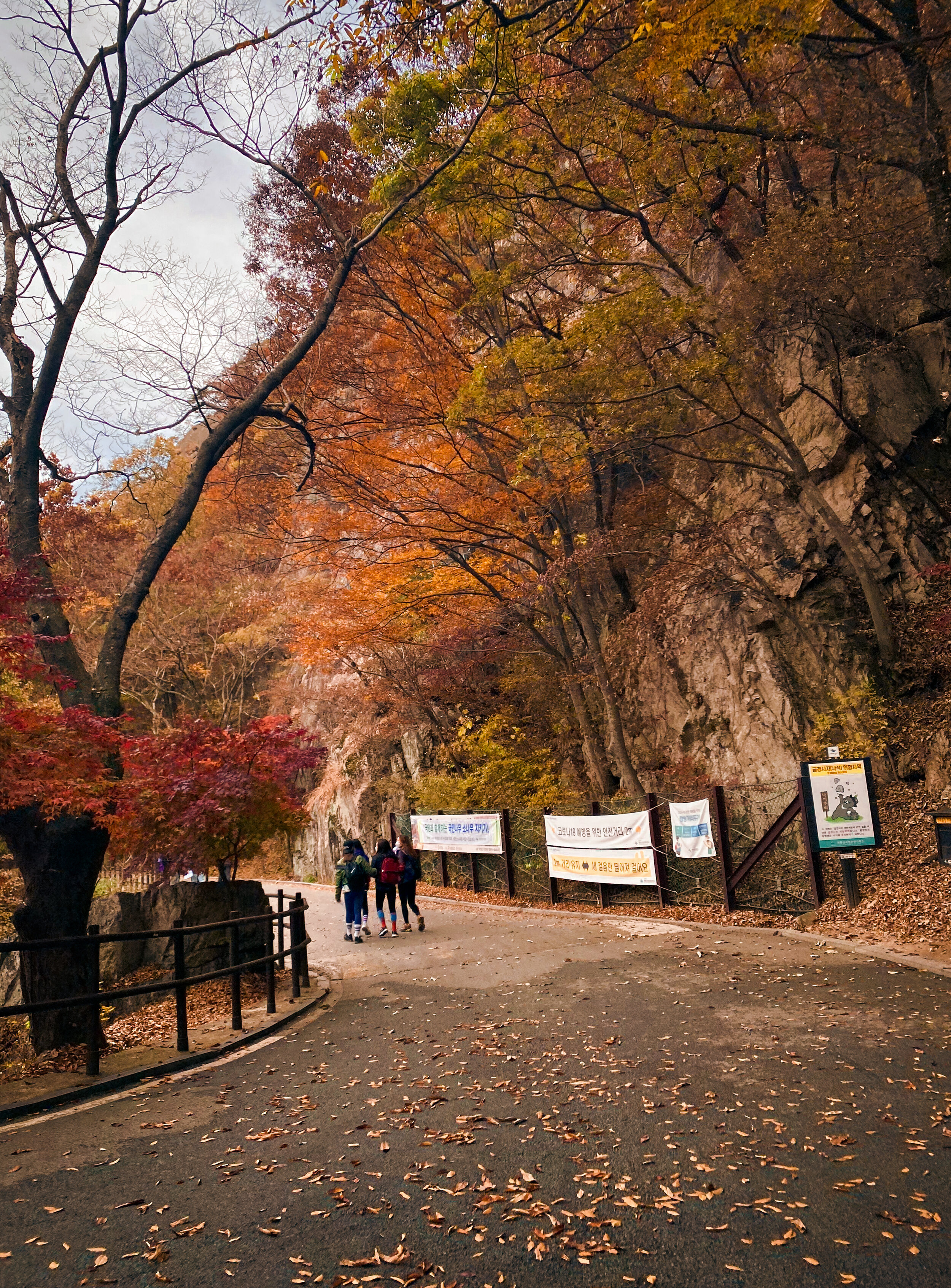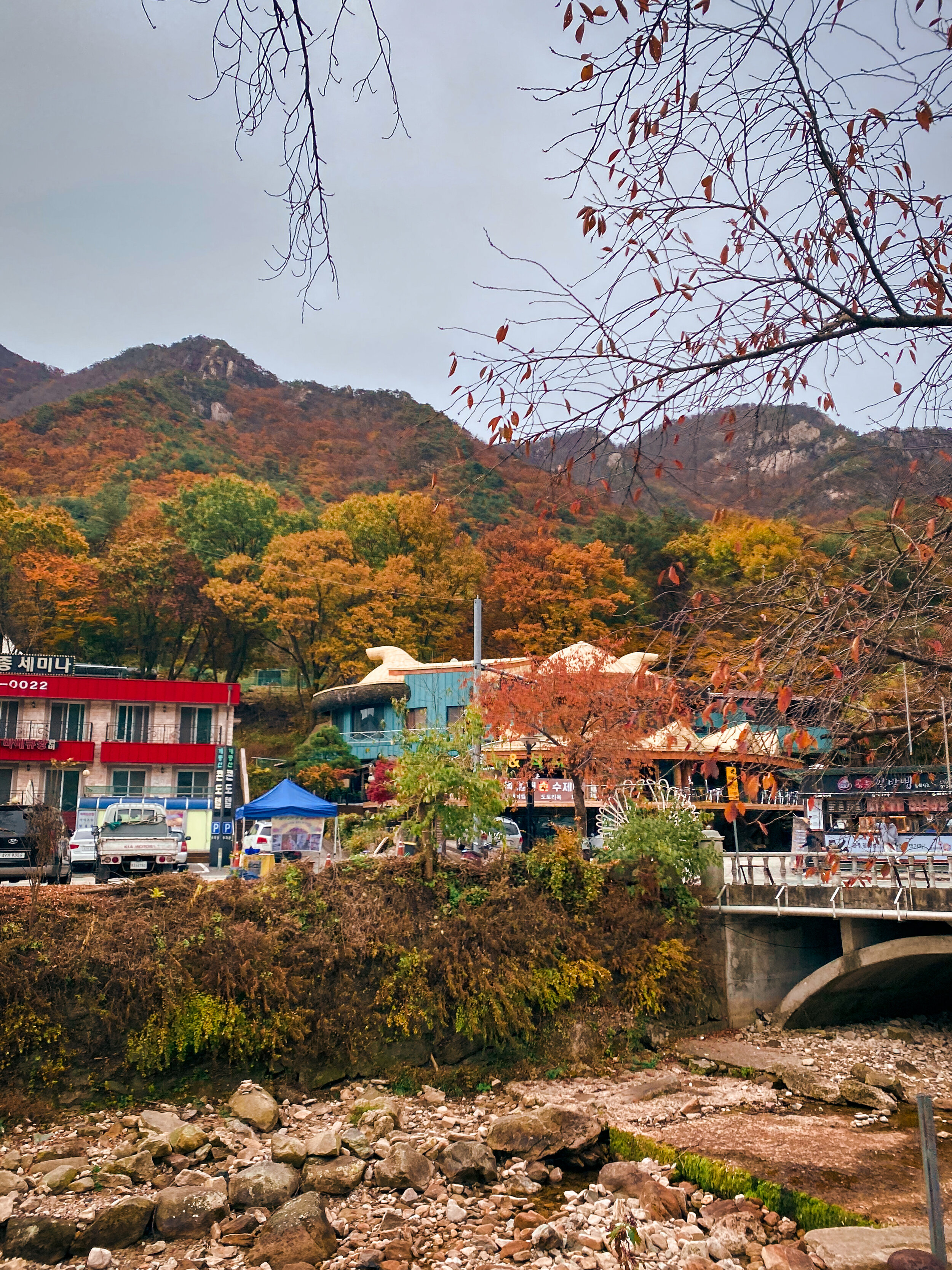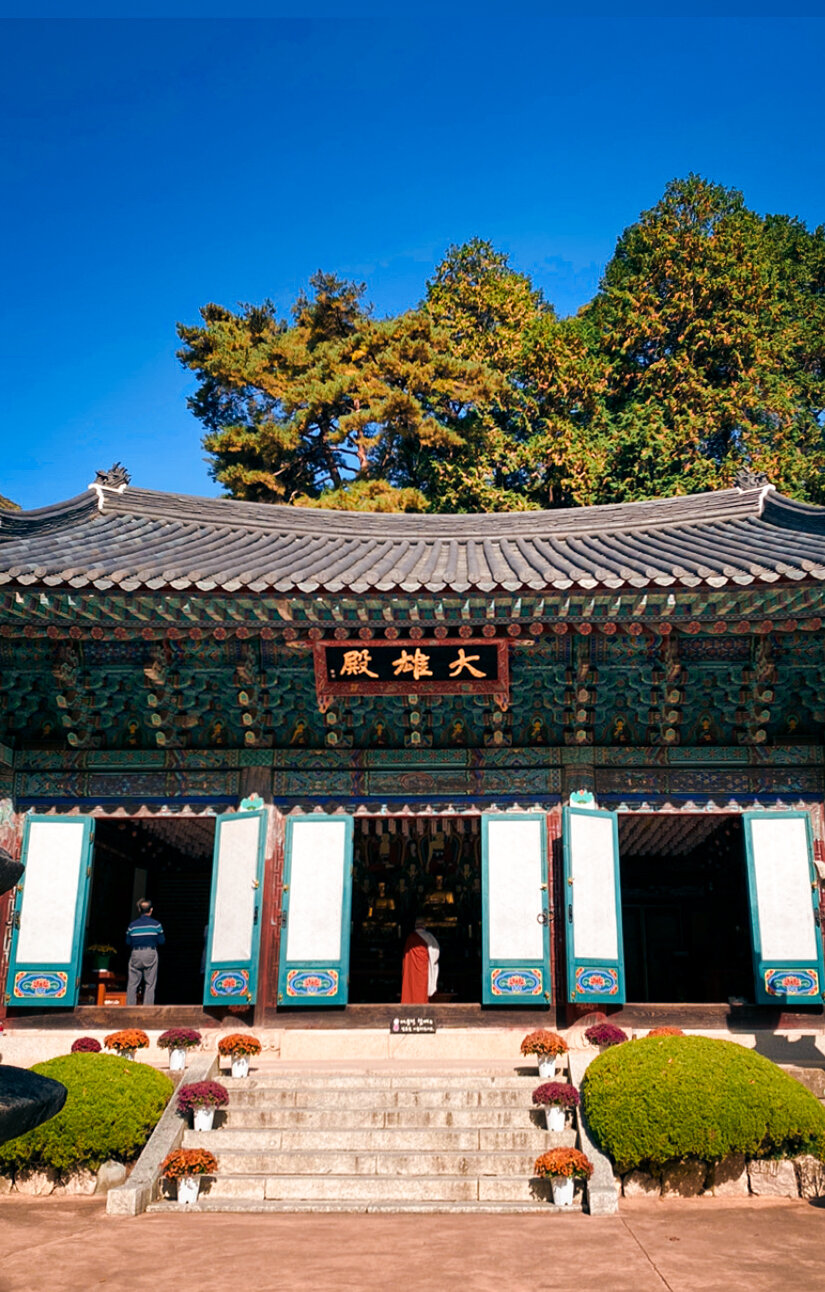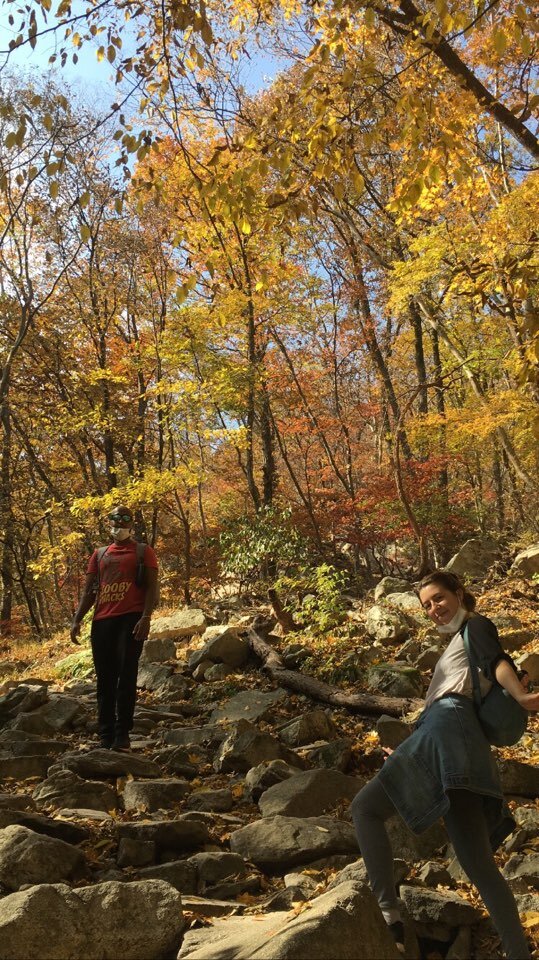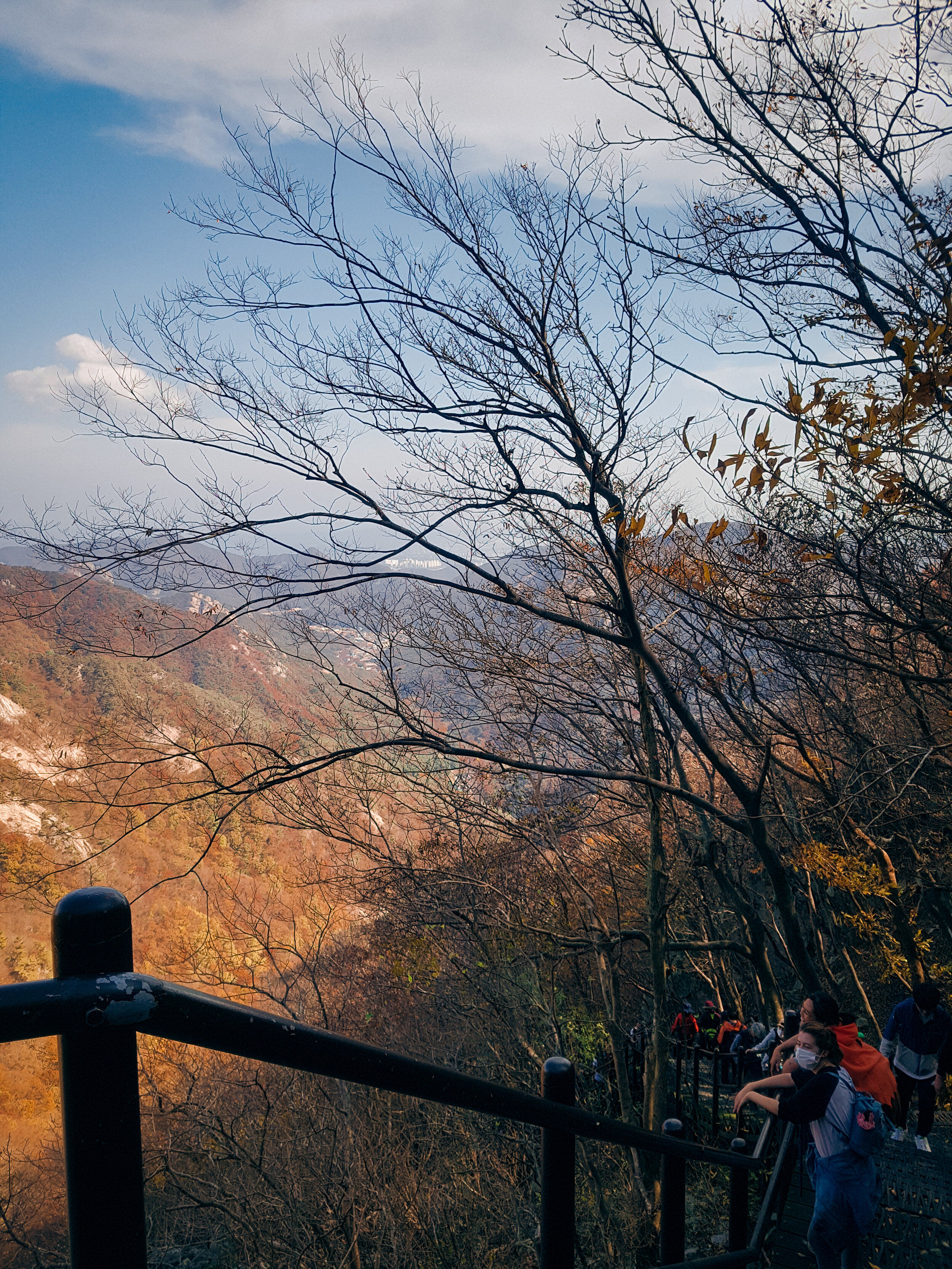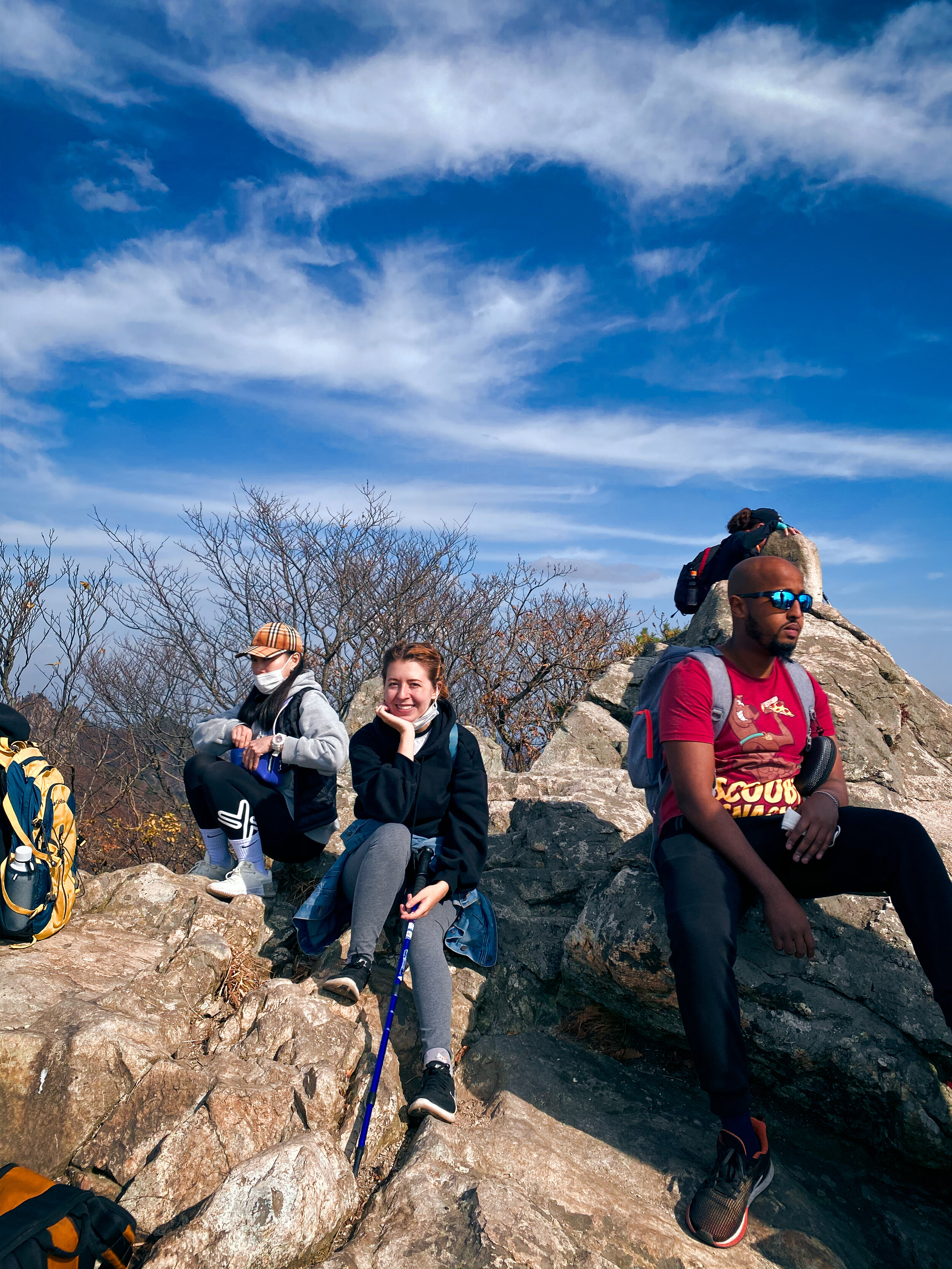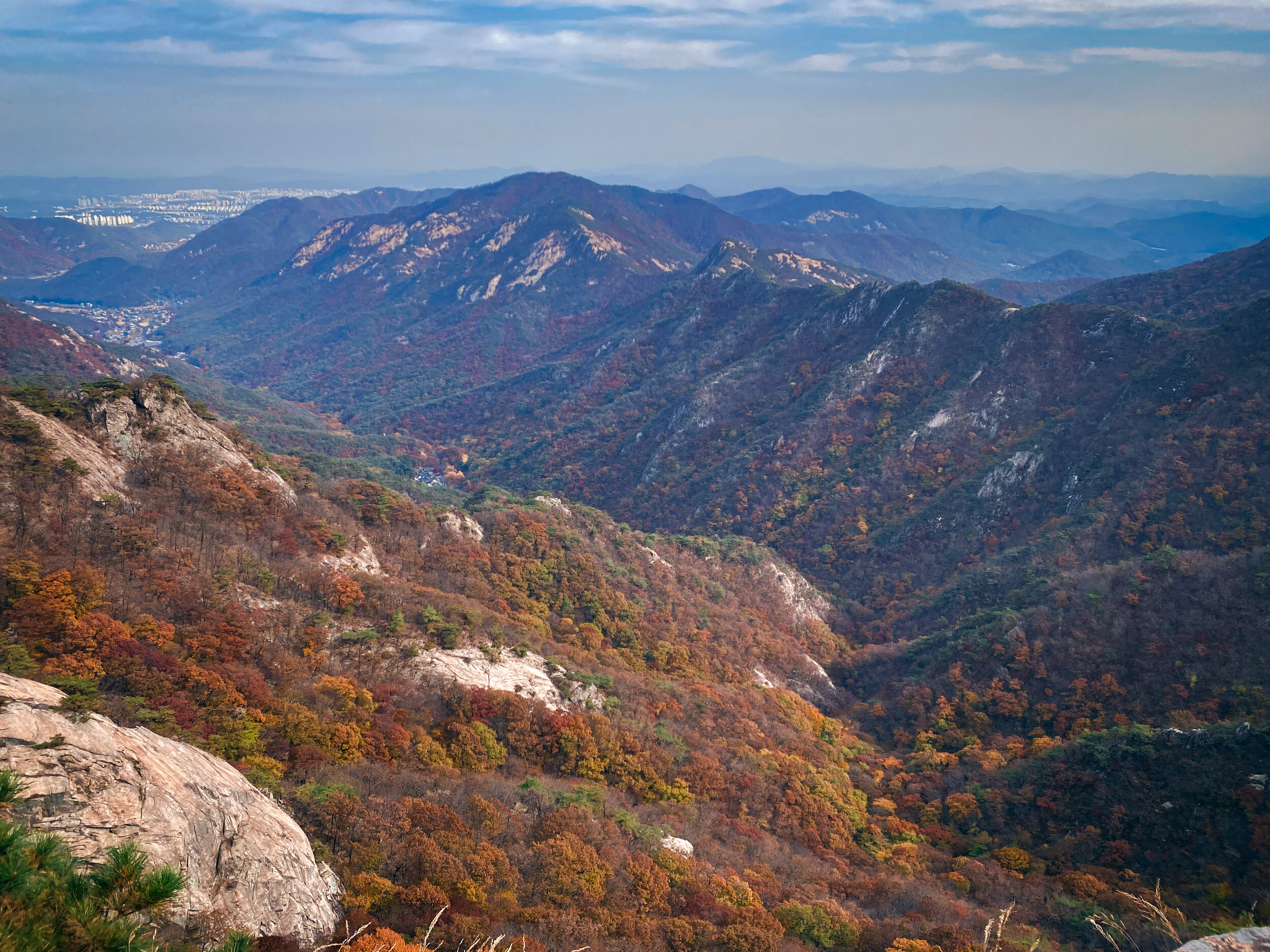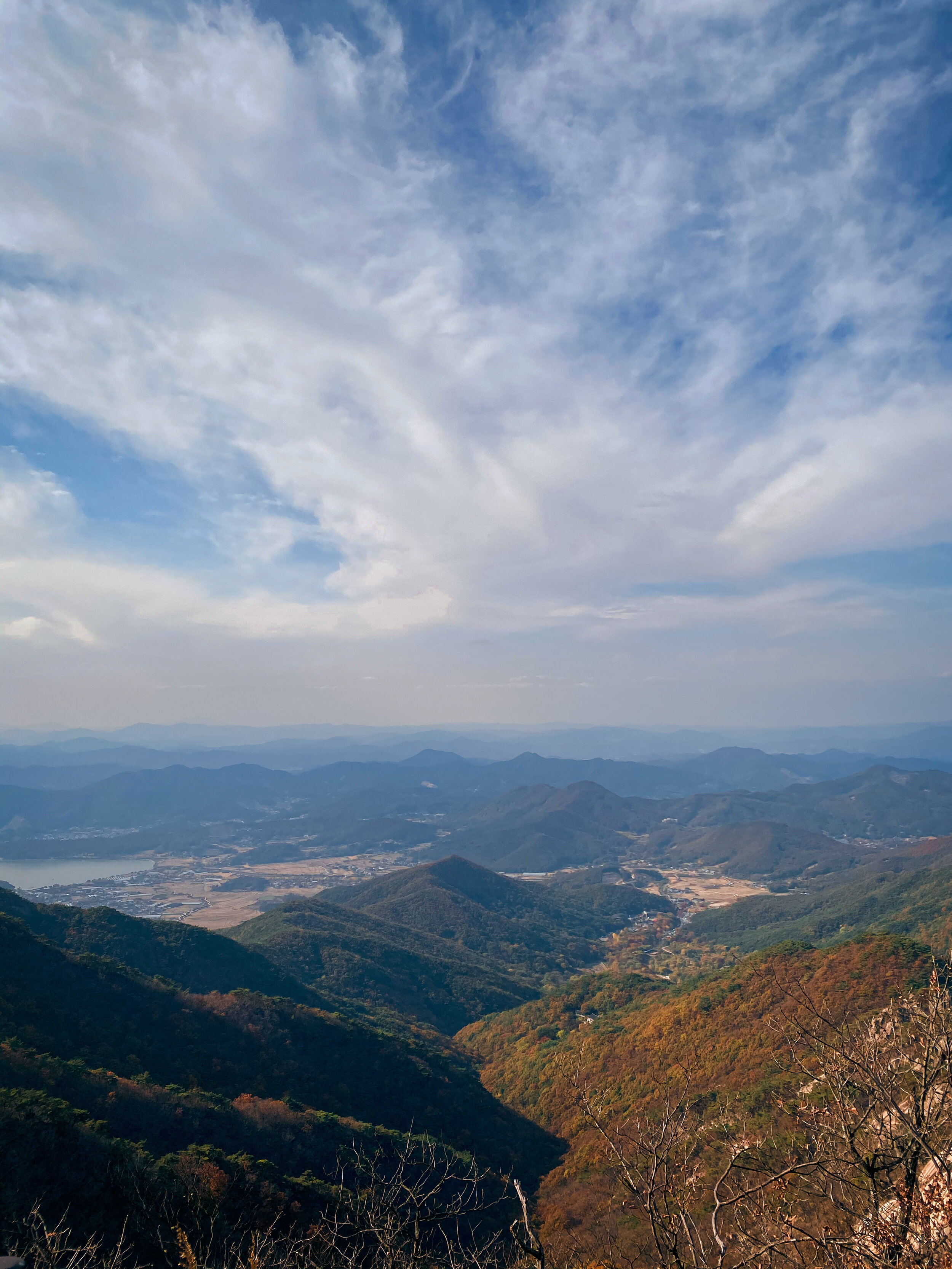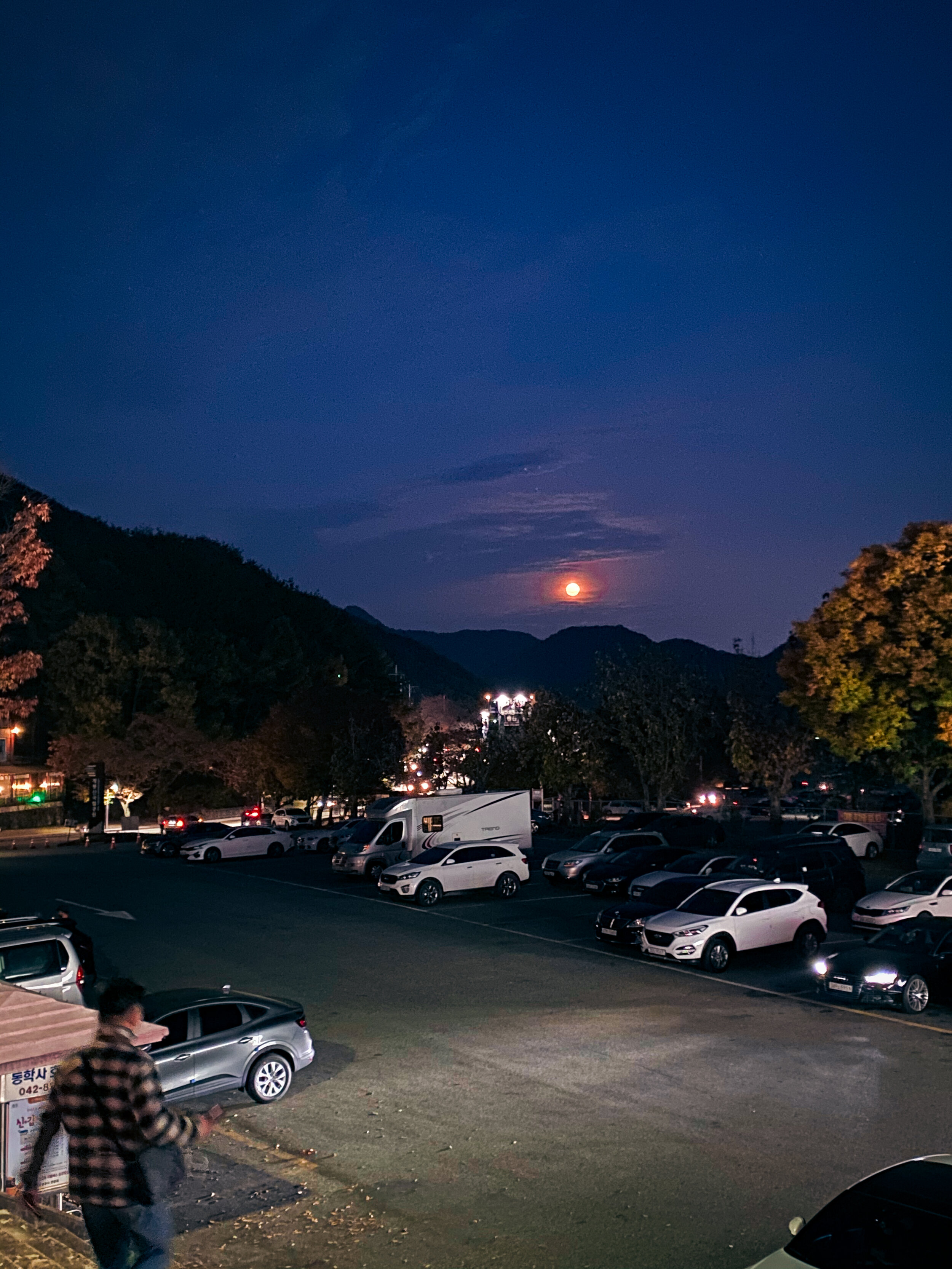Hiking Gyeryongsan
Last Saturday my friends and I decided to do a little (read: long) Halloween hike. We settled on Gyeryongsan 계룡산, a popular hiking spot with eight possible courses and 20 peaks. It’s only 16km out of Daejeon.
The name itself means “Rooster Dragon Mountain” because the shape of its ridgeline is said to look like a dragon wearing a rooster as a crown. I mean…sure.
Anyway, the mountain is considered to be very sacred, with several famous religious sites. Two years ago, I wrote about Donghaksa, a Buddhist temple at the base of the mountain. There’s also Gapsa and Sinwonsa, both of which are over a thousand years old. The mountain has several pagodas, including the Brother and Sister Pagoda.
Getting there
At 9am, we met up in Dunsan, a downtown area of Daejeon, and took the 107 bus all the way to end. The ride was about 45 mins and was stuffed with older hikers in their best boots and windbreaker jackets.
The bus stop dropped us off at a little village, where we strolled past lots of street stalls, traditional restaurants boasting their makgoelli, pensions and even a noraebang. There was also nearby camping (er, glamping) grounds, called Park of Dream.
It took about twenty minutes to reach Donghak Temple (동학사). We paid 3,000 won for a ticket. We stopped only to take pics, use the bathroom, and plot our loop.
Our plan was the Donghaksa Course 2 (동학사2코스), an 11.8km intermediate-advanced hike (level B) that reaches both Gwaneum (관음봉) and Sambul (삼불봉) peaks. It’s not for beginners and supposed to take 4-6 hours.
The Climb
So we kept left and, at 10:30 am, began the 2.3km climb to Gwaneumbong (관음봉). It wasn’t so bad going uphill, although the stairs were pretty killer for our thighs. At particularly rough points, other hikers told us “화이팅!” (“Fighting!”) to encourage us.
I can’t recommend going in Autumn more. I wish I could’ve captured how beautiful the leaves were. Everything was bright gold, yellow, and red. When the wind blew, it was like it was raining leaves. We kept pausing just to soak it all in.
At 1pm, we stopped just before Gwaneumbong peak (816m), to eat our lunch of egg sandwiches, oat bites, kimbap, and bananas. Older hikers stopped to wish us a Happy Halloween, ask us where we were from, and give us candy.
After, we continued up to the peak for pictures. The view was breathtaking. It was crowded—many people stopped here to eat their lunches, and there was a solid line to take pictures with the capstone.
We continued to hike the ridge-line, heading to the other peak.
Now, this part was kinda scary. We held onto the rails and helped each other up the rock-face. Here, some parts of the trail were framed on each side with sheer drops. Other parts were suspended staircases with the thinnest steps in the world.
If it’s not obvious by now, I’m a bit scared of heights.
Despite our shakey legs, we kept up our slow pace and finally made it to Sambulbong (775m) at 3pm. We took another break and pressed on, now on the decline.
The Brother and Sister Pagodas (남매탑)
You might think the ridge-line would be my least favorite part of this hike, but it actually wasn’t—sure, it was scary, but it was also exciting and challenging. No, the trail on the way down from Sambulbong was my least favorite.
With hiking boots I’m sure it’d be much more manageable, but with my little tennis shoes, finding purchase on the rocks was difficult, and I slipped a lot. We slowed down even more, trying to take careful steps.
After about an hour or so, we made it to the Brother and Sister Pagodas (남매탑).
This site has a famous folklore legend. The Korean version is here. In English, it goes:
Once upon a time, there was a monk living in the mountains. One day, a tiger appeared, howling and scratching its throat. The monk looked closely at the tiger. He found a thorn stuck in the tiger’s mouth, so the monk put his hand in the tiger's mouth and pulled it out. After a few days, the tiger returned with a lady on its back. It put her down and left. The monk soon realized the woman had fainted, and the tiger had brought her to the monk to save her.
The monk moved the woman into his house and cared for her. When the woman awoke, she told the monk that the tiger had brought her on the night of her wedding. It was too snowy and cold for her to leave, but as soon as Spring came, the monk took the woman home.
The woman's parents, who had been looking for her, thanked the monk. They asked him to marry their daughter, as she could not marry anyone else after what happened. The woman said to her parents, “Father, mother. I will not marry. I would like to live with this monk who saved me. It was not accidental for me to meet a monk. I will follow the monk and practice Buddhism with my heart.” Both her parents and the monk eventually agreed due to the woman's strong attitude. The monk laughed, saying, "Then, let's become brother and sister, and do our best to clean up the Buddhist temple together."
They returned to the temple, and lived together in Buddhist practice all their lives. They reached Nirvana at the same time. It is said that, later, people built the two pagodas to commemorate this beautiful relationship and called them the Brother and Sister Pagoda.
The story and pagodas were really lovely, but with only 1.7kms left, we decided not to stop for too long. It was growing ever darker—since the sun sets at about 5:30pm now—and we wanted to finish in time for dusk.
The road goes ever on and on
Again, the descent continued to be the most frustrating part of the trail. If I were braver and fitter (and had better shoes), you could easily make the remaining journey down in half the time we did.
One friend, who was more experienced, forged ahead, while my other friend and I kept a snail’s pace. It felt endless. We joked we were in purgatory (right, as if purgatory would be a peaceful mountain with gorgeous autumn leaves).
But finally we made it down and out, returning to Donghaksa temple. Victory!
Gyeryongsan was a challenging hike that totaled about 6.5 hours for us, including breaks. Parts of it were really scary, but for more experienced mountain climbers, it’s probably a piece of cake.
Preparedness aside, it was absolutely worth it. The views were incredible. I really do recommend hiking Gyeryongsan! If you’re not an avid hiker, there’s other courses that aren’t so daunting.
Oh, and my companions and I agreed that starting towards Gwaneumbong first and then going to Sambulbong was a better way than the reverse—the trail from Donghaksa to Gwaneumbong would be too steep going down, in our opinion.
Thanks for reading and I hope you had a great Halloween!
